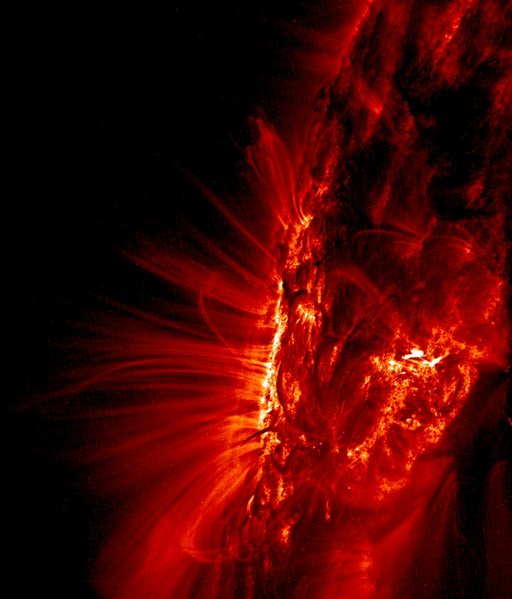An approaching solar storm is expected to affect the magnetic field of Earth. If the slow-moving solar particle cloud reaches Earth later this week, Earth may suffer a few mild geomagnetic storms.

Solar Updates
Spaceweather.com, a website that utilizes sun-monitoring data to provide space weather updates, made the prediction.
When charged particles from the Sun interact with the Earth's magnetic field, it causes changes that lead to geomagnetic storms. These storms can disrupt electrical grids and communication networks if they are powerful enough.
Direct Collision
The prospective forthcoming storm, however, is only predicted to be a G1-class storm-the mildest category-according to the National Oceanic and Atmospheric Administration's Space Weather Prediction Center (SWPC) space weather scale; therefore, it seems doubtful that this would be the case.
According to the SWPC, G1-class storms might have a minimal effect on satellite operations and mild power grid fluctuations. Additionally, auroras can be visible in the sky at lower latitudes than usual, such as above the northern states of Maine and Michigan in the United States.
Reaching the Planet

According to spaceweather.com, a cloud of particles blasted from "an unstable filament of magnetism" on the Sun on July 15 will be the reason for the potential storm, which is predicted to arrive between July 20 and July 21.
A NASA prediction model also showed what solar scientist Tamitha Skov described as a "direct strike" from a solar ejection on July 15, but with an earlier impact date of July 19. If this is the same expulsion, it's unclear.
The solar ejection is also visible in a video taken that day by NASA's Solar Dynamics Observatory, which begins with a very short flash of material speeding away from the Sun's surface in the middle of the day.
Coronal Mass Ejections
Coronal mass ejections (CMEs) are frequent occurrences of these particle clouds. However, one only travels toward Earth about once every few weeks.
CMEs can carry an embedded magnetic field and billions of tons of solar atmospheric material. Twisted magnetic field lines abruptly reorient themselves, releasing them from the Sun.
According to the SWPC, the pace of CMEs can vary greatly, with some reaching Earth in as little as 15 to 18 hours. The ejection from July 15 is expected to impact Earth between five and six days after leaving the solar, although it is moving remarkably slowly.
No Advisories
As of Monday, the SWPC has not issued any alerts or advisories. In any event, even if it does strike Earth, there won't likely be any issues for the general population.
Should we worry?
Some scientists are concerned that the most recent solar explosion wave might cause an Earth-bound geomagnetic storm. The flareup turned out to be modest, so for the time being, the Earth is secure. But these storms are unpredictable, and researchers are still puzzled as to why the Sun flares up during these storms.
The magnetosphere, the region around our planet that is controlled by our magnetic field, is significantly disturbed by geomagnetic storms. The storms frequently produce stunning auroras in the night sky, but they may also seriously disrupt the planet's electrical infrastructure and navigational systems.
Related Article : Can We Survive a Catastrophic Solar Storm? What to do When a Solar Flare Hits Earth
For more cosmic news, don't forget to follow Nature World News!
© 2025 NatureWorldNews.com All rights reserved. Do not reproduce without permission.





